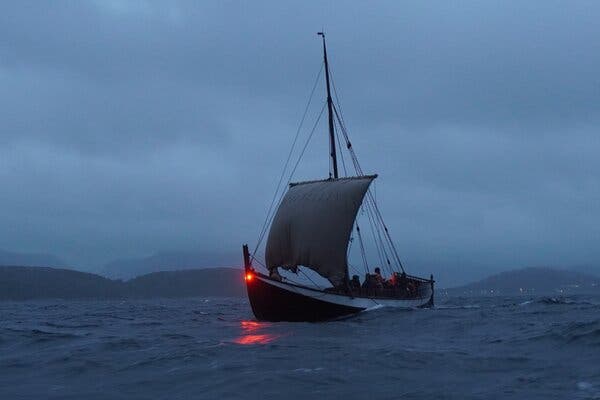In late summer 2021, Greer Jarrett embarked on the first of 26 voyages to retrace the maritime routes followed by Norse sailors during the Viking Age, spanning approximately A.D. 800 to 1050. While Vikings are often remembered for their raids, they were also skilled traders who established extensive commercial networks reaching as far as Baghdad, relying heavily on their seafaring prowess.
A doctoral candidate in archaeology at Lund University, Jarrett was particularly interested not only in the starting points and destinations of Viking voyages but also in the actual routes taken. He noted that much of Viking trade research focuses on endpoints rather than the journey itself. To explore this, over three years Jarrett captained nine different vessels reconstructed in the style of those used a thousand years ago, applying principles of experimental archaeology.
Most expeditions utilized 30-foot fyringer—square-rigged, open clinker boats built following the traditions of Afjord, a small Norwegian town where Viking boatbuilding methods survived into the twentieth century. These smaller boats, favored by fishermen and farmers, contrast with the large longships often emphasized in scholarship. Jarrett explained that longships, while impressive, were not designed for extended voyages and do not accurately represent typical Viking maritime travel.
Throughout the three-year period, Jarrett led crews of students and volunteers on sailing trips along the Scandinavian Peninsula’s western coast, the heartland of Norse seafaring. Even without crossing vast oceans, the expeditions encountered numerous hazards reminiscent of those faced by legendary figures like Leif Ericson and his father Erik the Red, the first European believed to reach North America. These challenges included turbulent tidal currents, damaged yards (horizontal spars supporting mainsails), towering 14-foot waves, unexpected encounters with a surfacing submarine, and an inquisitive minke whale.
Perhaps the most daunting obstacle was the sudden, powerful cold winds that swept down from nearby mountains. Known locally as fallvinder, these gusts appear to drop abruptly from hillsides onto the water, reaching speeds comparable to tornadoes and posing serious threats to sailors.


0 Comments
No comments yet. Be the first to comment!